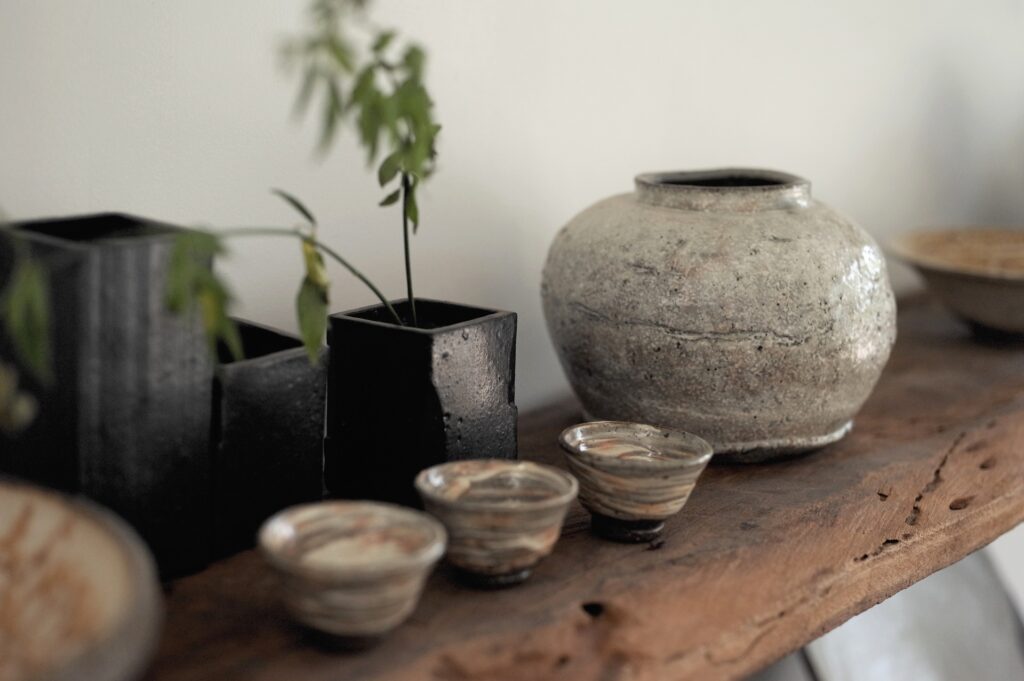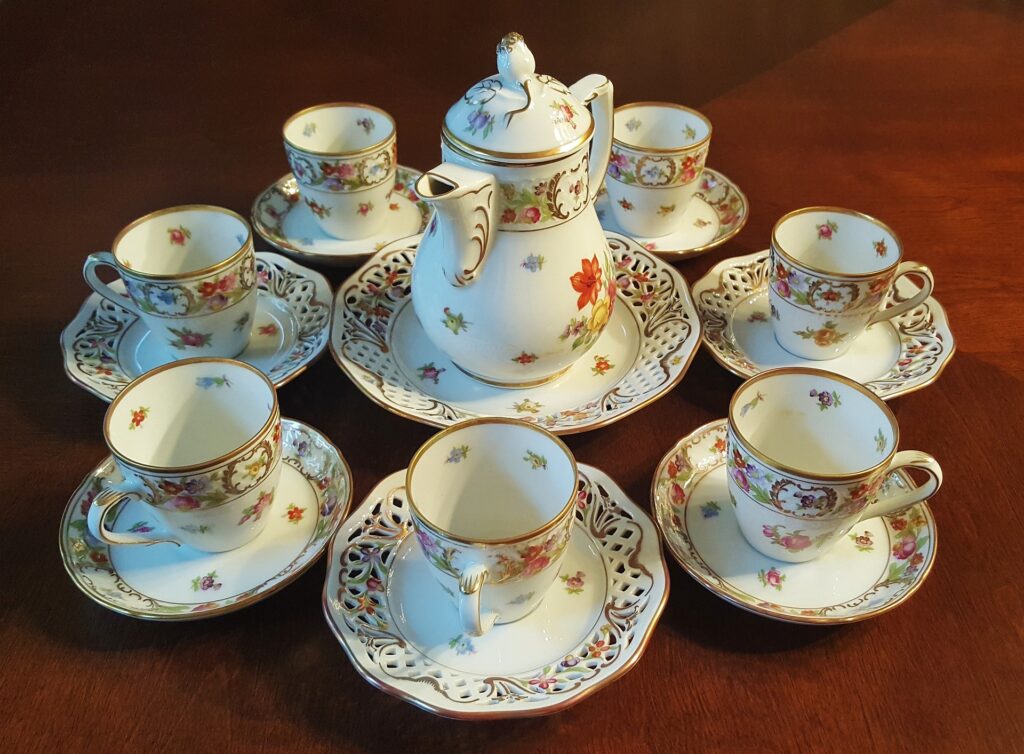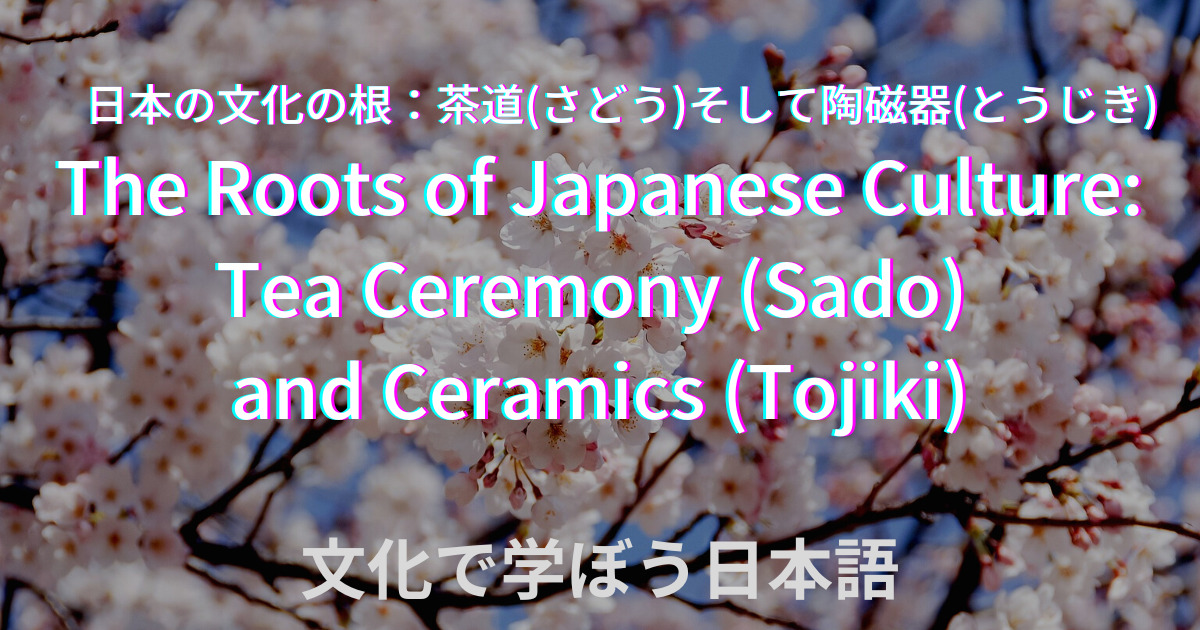日本は武士(ぶし)の文化がある。さらに商人(しょうにん)の文化もある。
この二つに共通(きょうつう)するある「もの」がある。
それは「やきもの」である。
Japan has a samurai culture. There is also a merchant culture.
There is a certain “thing” that these two have in common.
it is “pottery”
このやきもの。またの名を「陶磁器(とうじき)」という。
もともとは古代において、土器(どき)といっていた。
This pottery(Yakimono). Another name is “ceramic”.
Originally in ancient times, it was called pottery(Doki).
朝鮮や中国の窯の技術(ぎじゅつ)が、この低温(ていおん)でつくる土器から「陶磁器」へと一変(いっぺん)する。
それが日本語では「やきもの」ともいう。
The kiln technology of Korea and China changed from earthenware made at this low temperature to “ceramics”.
In Japanese, it is called yakimono.
日本でいえば戦国時代と豊臣秀吉の朝鮮(ちょうせん)出兵(しゅっぺい)からであった。
朝鮮に派遣(はけん)された大名は、朝鮮の陶工(とうこう)をも連れて帰ってくる。
陶磁器の技術に目をつけたのだろうか。
In Japan, it was from the Sengoku(Battle) period and Toyotomi Hideyoshi(豊臣秀吉)’s dispatch of troops to Korea.
A feudal lord who was dispatched to Korea also brought back a Korean potter.
Did they have their eyes on the technology of ceramics?
ほとんどが九州に定着する。窯をつくり、さらには磁器を生成するための石を発見する。
その代表的な地域が有田(ありた)そして唐津(からつ)である。後に有田焼として知られるところである。今の佐賀県(さがけん)にある。
Most of them settle in Kyushu. Build a kiln and even discover a stone to produce porcelain.
The representative areas are Arita and Karatsu. It was later known as Arita ware.

有田では今までの陶器とは異なる、「磁器(じき)」を生成することに成功。
それは白く透明であり、後に西洋の人々を魅了(みりょう)する。
In Arita, he succeeded in producing “porcelain”, which is different from conventional pottery.
It is white and transparent, which later fascinates Westerners.
それにともない、日本では茶道(さどう)が発展する。これが禅(ぜん)と結びつき、精神修養(せいしんしゅうよう)として
武士に受け継がれる。したたかで、しずかな「刀」ともいえよう。
Along with this, the tea ceremony (sado) developed in Japan. This is connected with Zen, and as a spiritual training
Inherited by samurai. It can be said that it is a strong and quiet “sword”.
日本は17世紀以降、この武士と商人が「陶磁器」を媒介にして地位をかためる。
特に各藩(はん)(今でいう県)はこの「陶磁器」の貿易(ぼうえき)によって栄える。つまりお金儲(もう)けができた。
そして武器をも製造することとなる。
何とこれが日本の近代へ導く力となっていった。
From the 17th century onwards, samurai warriors and merchants used ‘ceramics’ as a medium to solidify their position in Japan.
In particular, each domain (today’s prefecture) prospered through the trade of this ‘ceramic’. I mean, I made money.
And it will also manufacture weapons.
Surprisingly, this became the force that led to the modernization of Japan.
有田焼は伊万里焼ともいわれる。ヨーロッパ特にネーデルランド(オランダ)との貿易。さらにはヨーロッパでの博覧会によって、世界に不動の地位をえていくのであった。
Arita ware is also called Imari ware. Trade with Europe, especially the Netherlands (Netherlands). Furthermore, it gained an immovable position in the world by the exposition in Europe.

「茶道」と「やきもの」の歴史がわかると、日本の近代の歴史がわかってくる。
If you understand the history of “tea ceremony” and “pottery”, you will understand the modern history of Japan.
*陶器: pottery, earthenware
*磁器:porcelain
*陶磁器:ceramics, pottery, pottery and porcelain



コメント